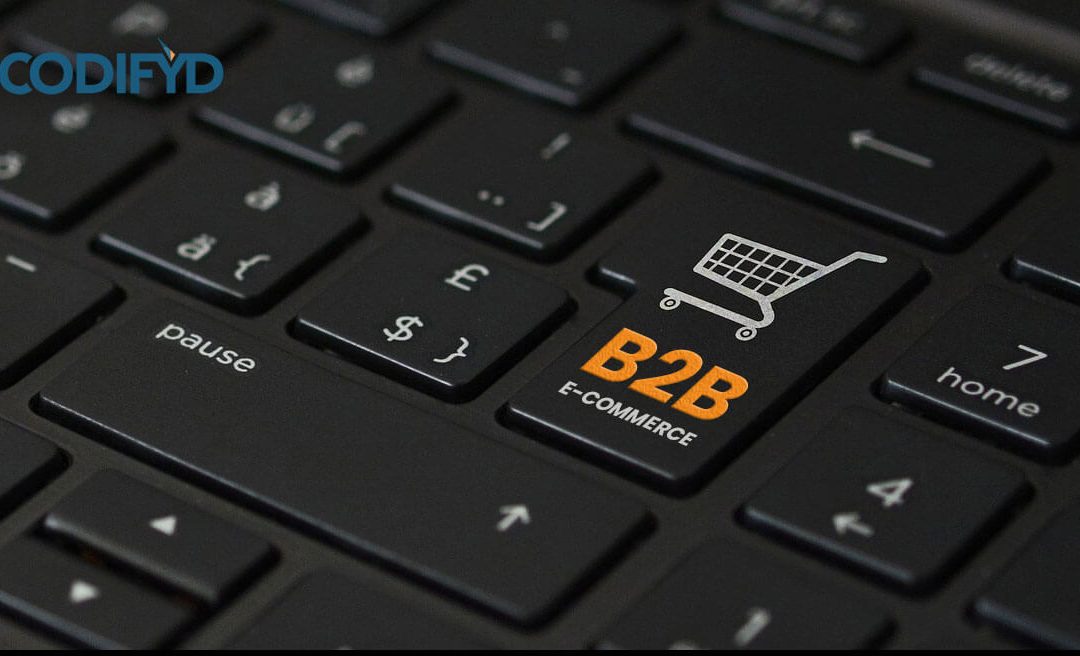The B2B customer of today is accustomed to the online buying experience. This means, that their expectations from your B2B eCommerce platform are the same as that of the B2C platforms that they use. But, you wouldn’t disagree that B2B eCommerce is inherently way more complex. Catalogs are large with many product variants, high-level customizations are the norm, payment methods are vast, complex, and often involve multiple steps. These complexities can make the B2B eCommerce experience less than ideal, but can you afford that?
Frost and Sullivan estimates that B2B eCommerce will hit $6.6 trillion by 2020. But half of today’s B2B buyers are millennials who want optimized digital experiences. B2B eCommerce is already a driving force, take a look at the success of Amazon Business for instance.
Given the rising competition, have you wondered what you can do to provide an optimized, B2C-like buying experience to your customers? Here’s a go-to list for you to consider.
1. KISS – Keep It Simple Silly
Well, you can ignore the ‘silly’ part, but we just wanted to make a point here that if your eCommerce site is a complex maze to navigate through and is not UX-driven, you have a problem!
A B2B eCommerce website must focus on performance as well as usability. B2B decision makers are influenced by relevant content, compelling imagery, and smart design. An intuitive UI, responsive design to fit all devices and clickable CTA (call to action) buttons are a good place to start.
2. Optimized Searchability
Are your buyers finding the product information they need, easily? Or are they sifting through reams of material before getting to what they want? If ‘yes’, then you shouldn’t be surprised to see your buyers leaving your website, shopping cart abandoned.
B2B buying is a research-intensive process. Your buyers want to be sure that the product they are looking for matches their exact specifications. Product evolution also often compels product specifications to change. You don’t want your user to spend time figuring out what has changed in the product they want. You must also ensure that all product data is viewed through the right lens and in the right context. Master Data Management for your Product Information becomes the key. So, make your products easily discoverable. Your e-catalog must make it easy for them to get all the product information that they are looking for.
3. Clear, Precise and Organized Product Information
Your buyer is looking for product information that will enable faster decision making. They will not spend time ‘figuring it out’. B2B eCommerce success is directly proportional to how accurately you can present product content and product information.
You need to speak the language of your buyer. You need to ensure that the product information is always updated, complete, and accurate. Your inability to provide accurate and optimized product content will also impact your SEO-value. Your site-visitor will drown in the ocean of choices and move on without making a purchase if this is not the case.
4. An Optimized Order Process
Did you know that the average number of people involved in the B2B solutions buying process has increased from 5.4 in 2015 to 6.8 in 2017? These stakeholders represent many roles, functions as well as geographies. These buyers want to move cautiously, avoid risk and yes, you guessed it, save money!
Clearly, you need to consider these complexities while building your B2B eCommerce strategy. You may need to provide digital approval workflow processes, multi-user accounts, punch-out integrations that link back to the customers’ procurement systems for the necessary approvals, and other features, anything that eases out the buying complexity.
5. Seamless Payment Integration
While B2B buyers usually have individualized payment terms, they still want to leverage the convenience of electronic invoicing and payments. This helps them manage and track their payments and expenses. Your B2B eCommerce site must consider this. You may want to provide multiple invoicing and payment options to your buyers.
And you will also have to ensure that your eCommerce platform integrates seamlessly with all payment gateways and accounting systems. You will have to focus on the security aspect. This means employing all the relevant security measures- financial data integrity can never be compromised while storing payment information.
6. Personalized Pricing
B2B buyers always want to ensure that they get their products at a good price. You can attract your buyers by offering personalized pricing, something that your organization sales representative would otherwise offer to close a deal.
The online marketplace can be tough because of this missing element of human interaction. But you can still give some of the personalization that a customer craves. Think discounted pricing for higher quantities, offering options for recurring orders of supplies and personalized pricing for the same. With such features, your buyer will not miss that sales representative that much. Your B2B digital commerce site will still deliver that personalization value to the customer.
7. Mobile First Experience
And while everyone will talk about fast and convenient shipping, let’s not waste digital real estate on the obvious. Let’s instead talk of creating a mobile-focused strategy to stay in step with the growing customer expectations. After all, almost 70% of B2B buyers are expected to use mobile for search queries and online buying by 2020. Clearly, providing a great mobile experience is an imperative for success.
Creating mobile-first product content, a native experience design to engage the user, effective digital merchandising, geo-tagging, and using technologies such as AR, NFC etc. help in curating a highly effective and engaging mobile experience.This will help drive customer engagement and loyalty.
B2B eCommerce is a massive playing field with more competition each day. You must ensure that your eCommerce site meets customer expectations driven by their B2C eCommerce experiences. Those who don’t, may end up either as spectators on the sidelines or expending precious energy and resources playing ‘catch-up’.

